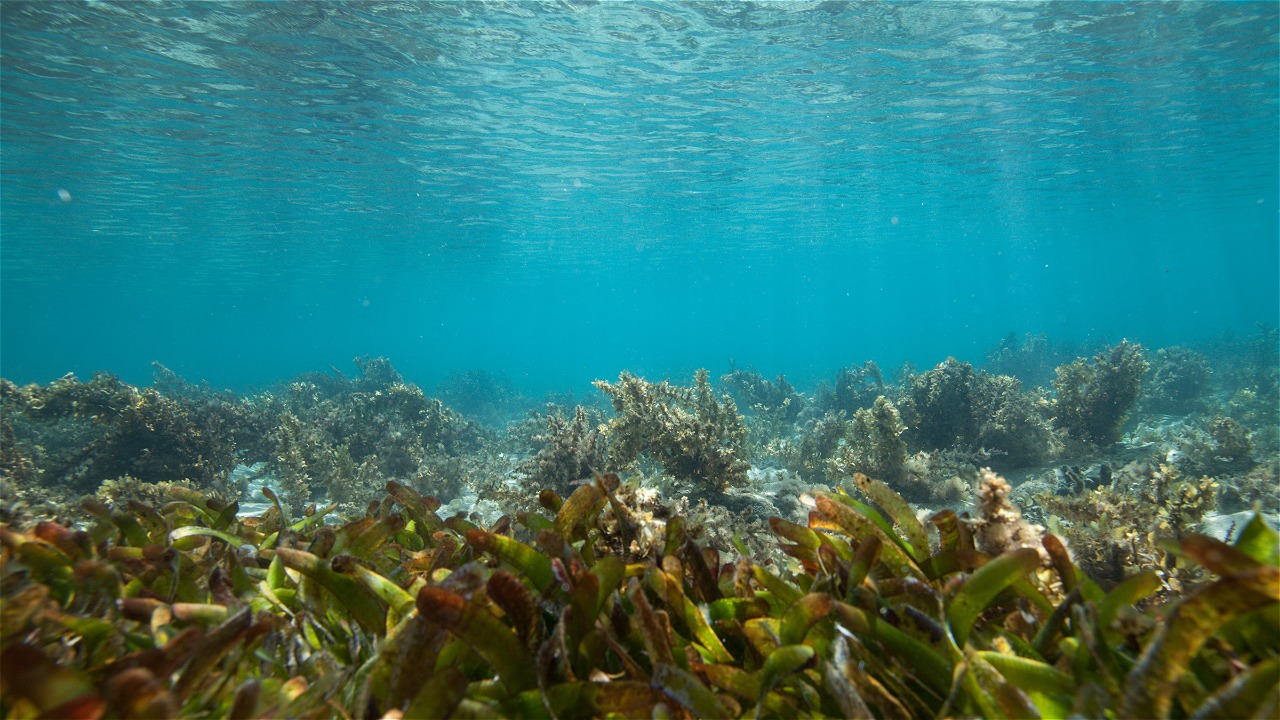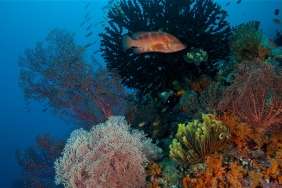COMMEMORATING NATIONAL FLORA AND FAUNA DAY, MMAF INVITES PUBLIC TO PROTECT DUGONG AND SEAGRASS ECOSYSTEM
Translated by IRA
To commemorate the National Flora and Fauna Day on November 5th, the Ministry of Marine Affairs and Fishery (MMAF) call out the significance to protect seagrass ecosystems which are habitat for the exotic marine mammal Dugong, says Brahmantya Satyamurti Poerwadi, Director General of Marine Spatial Management at the MMAF.
The Dugong and seagrass conservation campaign was launch at Pari Island, Kepulauan Seribu, by planting seagrass by the Directorate of Conservation of Marine Biodiversity at Ministry of Marine Affairs and Fisheries, Research Center for Oceanography of LIPI at Indonesian Institute of Sciences, and Bogor Agricultural Institute.
“This campaign invite the public to conserve the seagrass ecosystems that are home to Dugong. We can contribute by implementing by be responsible with our waste, not buying dugong based products and its derivatives, such as Dugong tears or fangs, and collaborative action to increase the awareness on the roles and functions of seagrass to the coastal ecosystem,” added Brahmantya.
Although protected under the law, the exotic dugong conservation remains unknown to many. One of the most serious threats to dugong population is human activity on land, such as pollution, reclamation, waste, and others. On the other hand, the presence of dugong population is an indicator of a healthy coastal ecosystem.
Between Dugong and Seagrass
Head of the Research Center for Oceanography of Indonesian Institute of Sciences, Dirhamsyah, underscored that dugong and seagrass are two inseparable species. Seagrass is an important habitat for dugong who grazes on rhizomes of seagrass particularly that belong to genera Halophila and Halodule. Based on data from Indonesian Institute of Sciences, only 5% of 1,507 km2 of seagrass meadows in Indonesia is categorized as healthy, leaving 80 of the total of bad condition and another 5% of unhealthy seagrass meadows. Coastal development, declining of sea water quality and destructive fishing practice are the main threats of seagrass decline in Indonesia.
Through the dugong and seagrass conservation campaign, the Directorate of Conservation of Marine Biodiversity of Ministry of Marine Affairs and Fisheries, Research Center for Oceanography of Indonesian Institute of Sciences, and Bogor Agricultural Institute will galvanize stakeholders’ active participation in conservation and management of dugong and seagrass habitat. The campaign will be carried out at strategic location of Bintan, Alor, Tolitoli, and Kotawaringin Barat.
Low Public Awareness
Result for public awareness survei conducted online by WWF-Indonesia in 2017 shows that 92% of the respondents are not fully aware of the relationship between dugong and seagrass. “Protecting dugong requires conserving their habitat, the seagrass meadows. Anthropogenic stress that gradually devestate the seagrass can be reduced should the public aware of the interdependent relationship between dugong and seagrass,” says WWF-Indonesia Coral Triangle Program Director, Wawan Ridwan.
Seagrasses perform a significant function to human lives. It sustains Indonesia’s fisheries resources. Rabbitfish, blue crab, and bivalves are commonly found on seagrass beds. It also has the ability to absorb carbon and reduce the climate change effects. Seagrasses can hold waves, capture and stabilize sediment which increase the water clarity.





